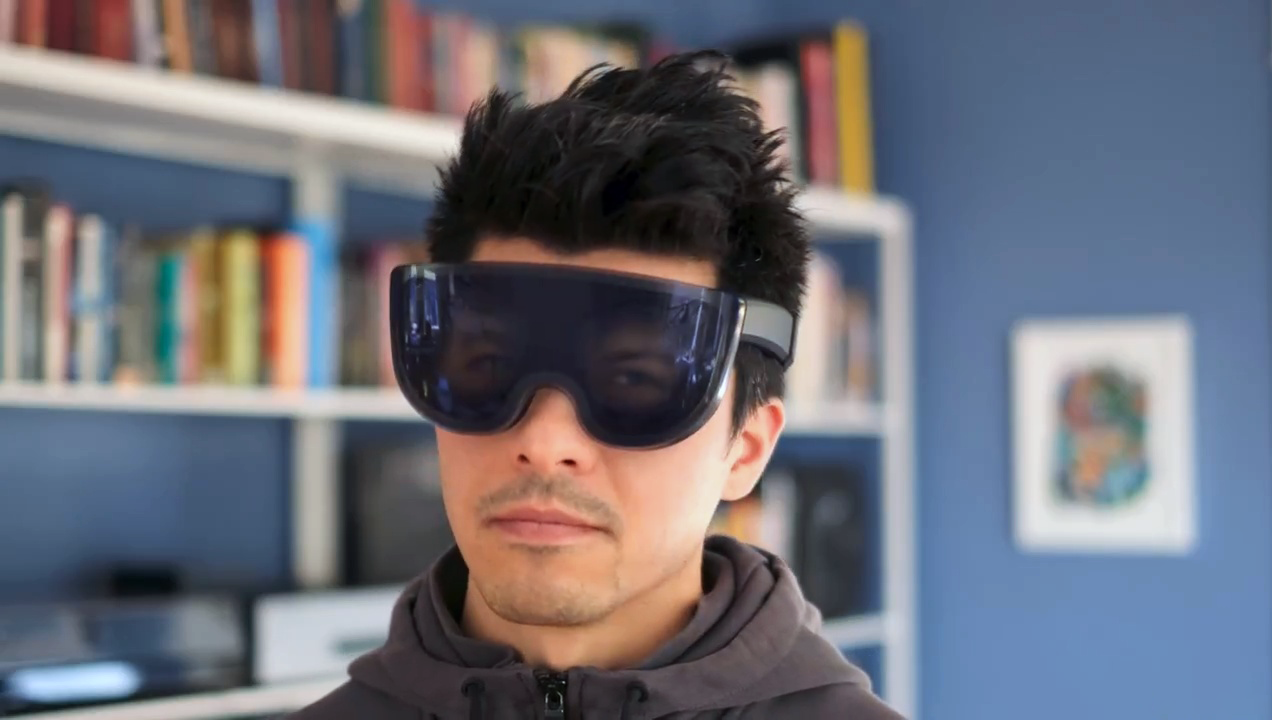Meta showed a render of the advanced ‘Mirror Lake’ prototype it teased last year, and said it’s “practical to build now.”
The render, showing what the headset would look like being worn, was teased by Meta’s Director of Display Systems Research Douglas Lanman during a talk titled “How to Pass the Visual Turing Test in AR/VR” given at The University of Arizona College of Optical Sciences.
“Here’s a rendering – this is what I’ll leave you on – of a device we felt a few years ago that is practical to build now.
Using HoloCake, using multi-view eye tracking, using reverse passthrough, with hardware components that exist, we believe this headset which we call Mirror Lake, which is just a rendering here, is actually achievable.”
0:00
The Mirror Lake concept was shown off by Meta last year. Meta said its purpose was to prove out “nearly all of the advanced visual technologies that we’ve been incubating over the past seven years” in a compact form factor.
To be clear, Mirror Lake is not being presented as a specific future product. When it was shown Meta CEO Mark Zuckerberg suggested the technology it proves out could be seen in products “in the second half of the decade”.
At the time Meta noted that Mirror Lake hadn’t even been built into a functional device yet, and later in the talk Lanman refers to it as something “we could build with significant time,” suggesting it has not yet been done.
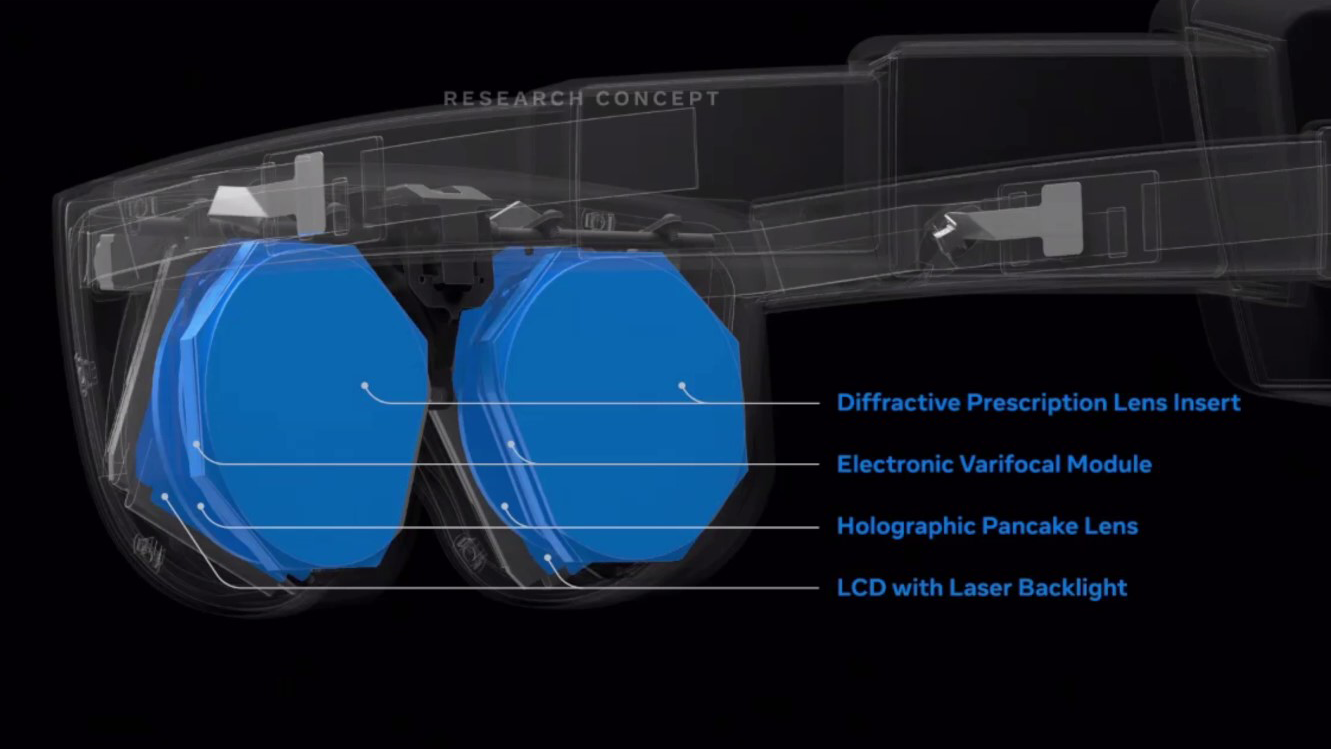
Here’s a rundown of the technologies the Mirror Lake concept design incorporates:
Varifocal Optics
All current headsets on the market have fixed focus lenses. Each eye gets a separate perspective but the image is focused at a fixed focal distance, usually a few meters away. Your eyes will point (converge or diverge) toward the virtual object you’re looking at, but can’t actually focus (accommodate) to the virtual distance to the object.
0:00
At its F8 conference in 2018 Facebook showed off a prototype headset called Half Dome, which incorporated eye tracking to mechanically move the displays forward or back to adjust focus. Half Dome solved the vergence-accommodation conflict but the mechanical approach would present serious reliability problems in the real world, making it unsuitable to be shipped in products.
0:00
Mechanical varifocal in a more recent prototype based on Half Dome 1.
At Oculus Connect 6 in 2019 Facebook described Half Dome 2 and Half Dome 3. Half Dome 2 used more reliable actuators and a more compact (but lower field of view) design. Half Dome 3 however took a completely new approach with no moving parts. Instead of moving the display, Half Dome 3 uses a stack of liquid crystal lens layers. Applying a voltage to each lens layer changes its focal length, so each unique combination of on and off results in a different focus distance. With 6 layers, there are 64 different possible focus distances.
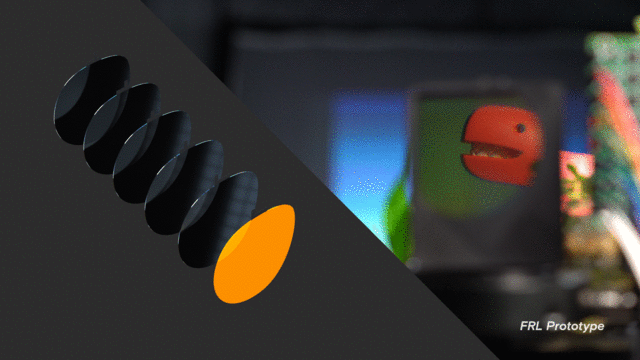
While Half Dome 3 was more compact than its predecessors, it was still much larger than the “ski goggles like” form factor Meta wants to one day achieve. Mirror Lake uses the same approach as Half Dome 3 but in a significantly smaller form factor, achieved through the use of “Holocake” lenses.
Holocake Lenses
Before the newest wave of pancake lens headsets like Meta Quest 3, Pico 4, Bigscreen Beyond, and Apple Vision Pro most VR headsets use regular refractive optics, which necessitate a relatively large gap between the display panels and the lenses. This gap is the primary driver of the thickness of older designs like Quest 2, Valve Index, and PlayStation VR2.
Pancake lenses use polarization to “fold” the optical path, making it much shorter. In fact, it becomes short enough that most of the remaining thickness is the lens itself.
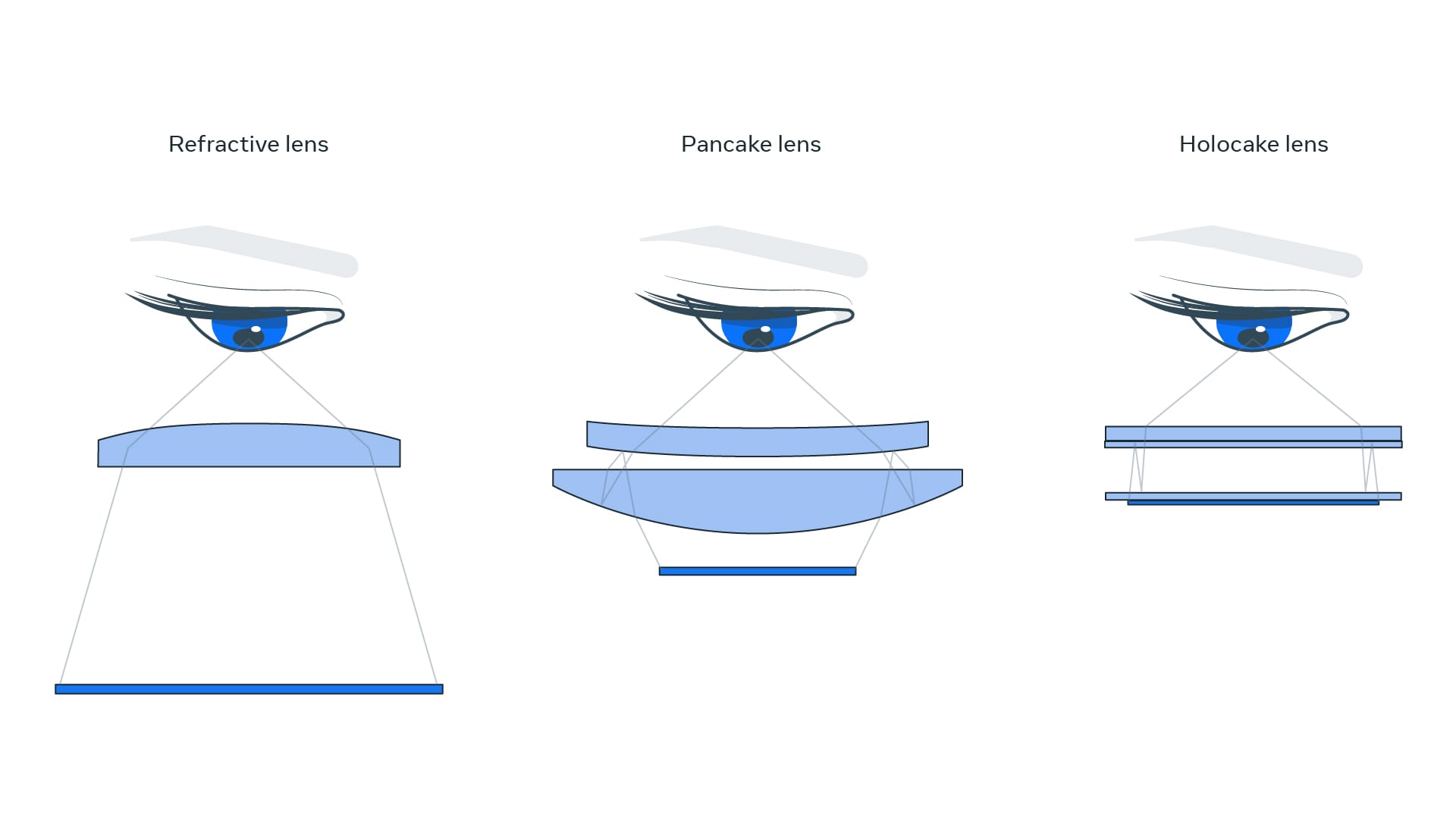
To reduce the size of headsets even further, Meta’s researchers kept the same core concepts of pancake optics – polarization-based optical folding – but replaced the curved lens with “a thin, flat holographic lens”, building on research they showed off in 2020. Meta calls the result “Holocake” lenses. To be clear, Meta uses the term “holographic” differently than some others in the industry – this is holographic as in holographic film, not a 3D light field display.
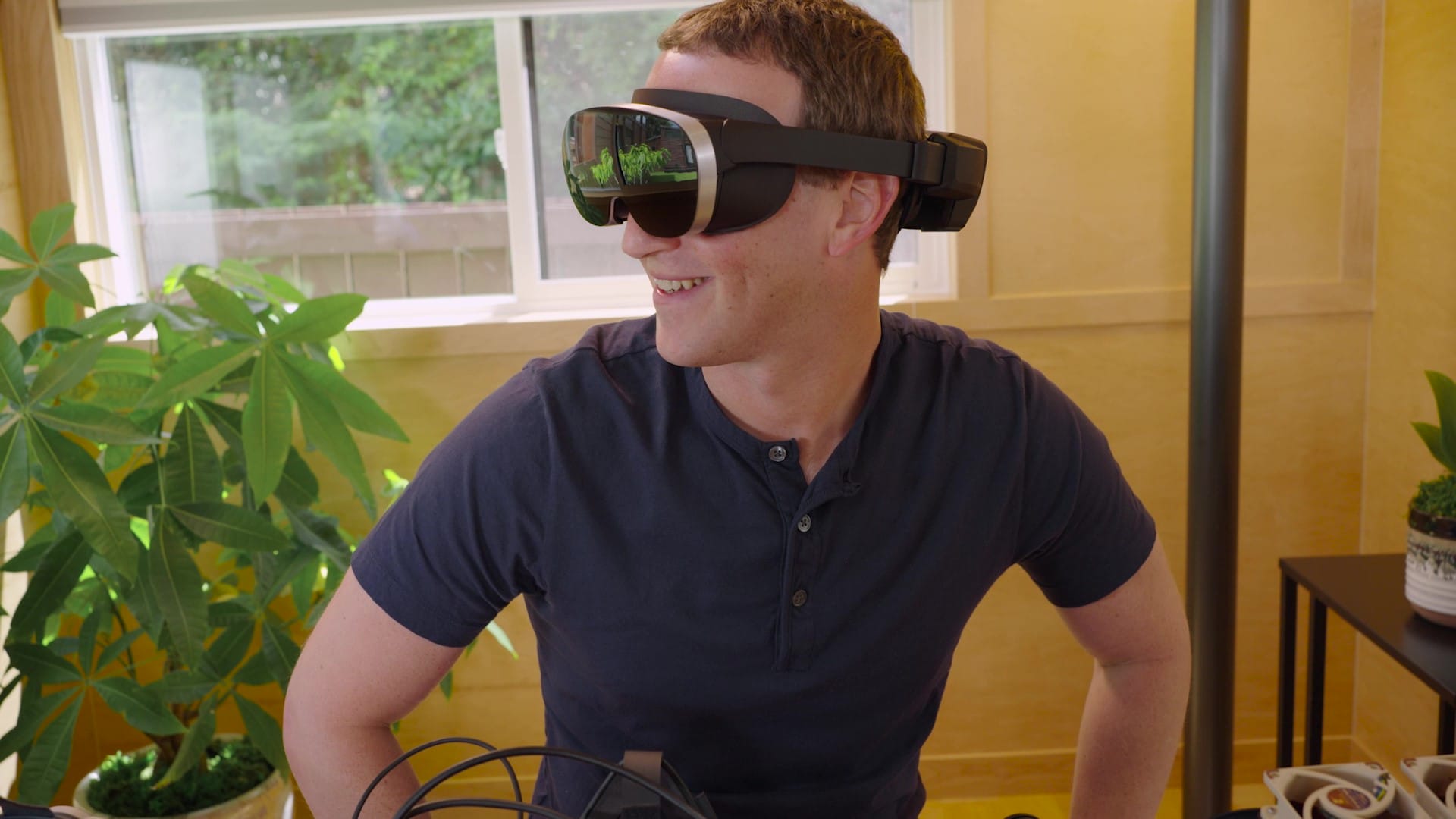
While Mirror Lake is still a concept, Meta did already build out a real working prototype headset using holocake lenses called Holocake 2, which it showed off last year while describing it as “the thinnest and lightest VR headset we’ve ever made.”
Holocake lenses have an important limitation – they require specialized lasers as the light source. LED backlights aren’t suitable. Meta’s Michael Abrash noted that lasers aren’t yet available at the performance, size, and price needed for consumer products. Using lasers does however enable a much wider color gamut, Meta claimed.
Reverse Passthrough
One of Apple Vision Pro’s defining features will be its ‘EyeSight’ lenticular front display, which shows a rendered view of your upper face to other people in the room when they’re nearby.
But did you know that Meta researchers showed this idea off more than two years ago?
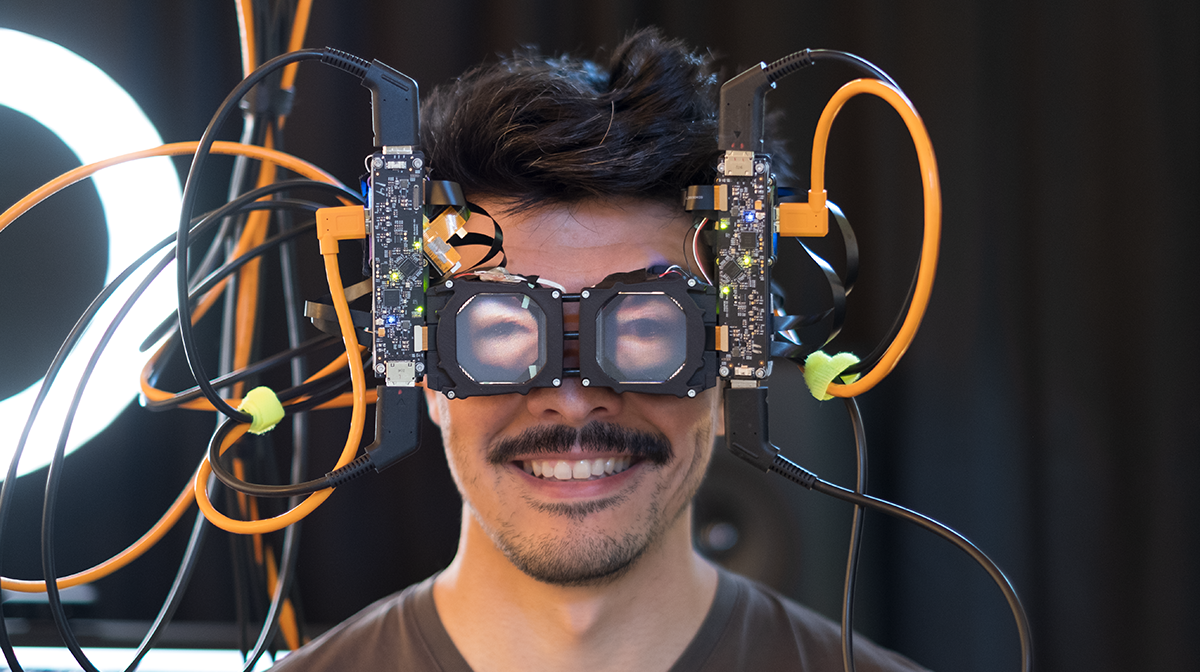
Meta’s version uses two separate lenticular displays rather than one, but it’s otherwise conceptually identical.
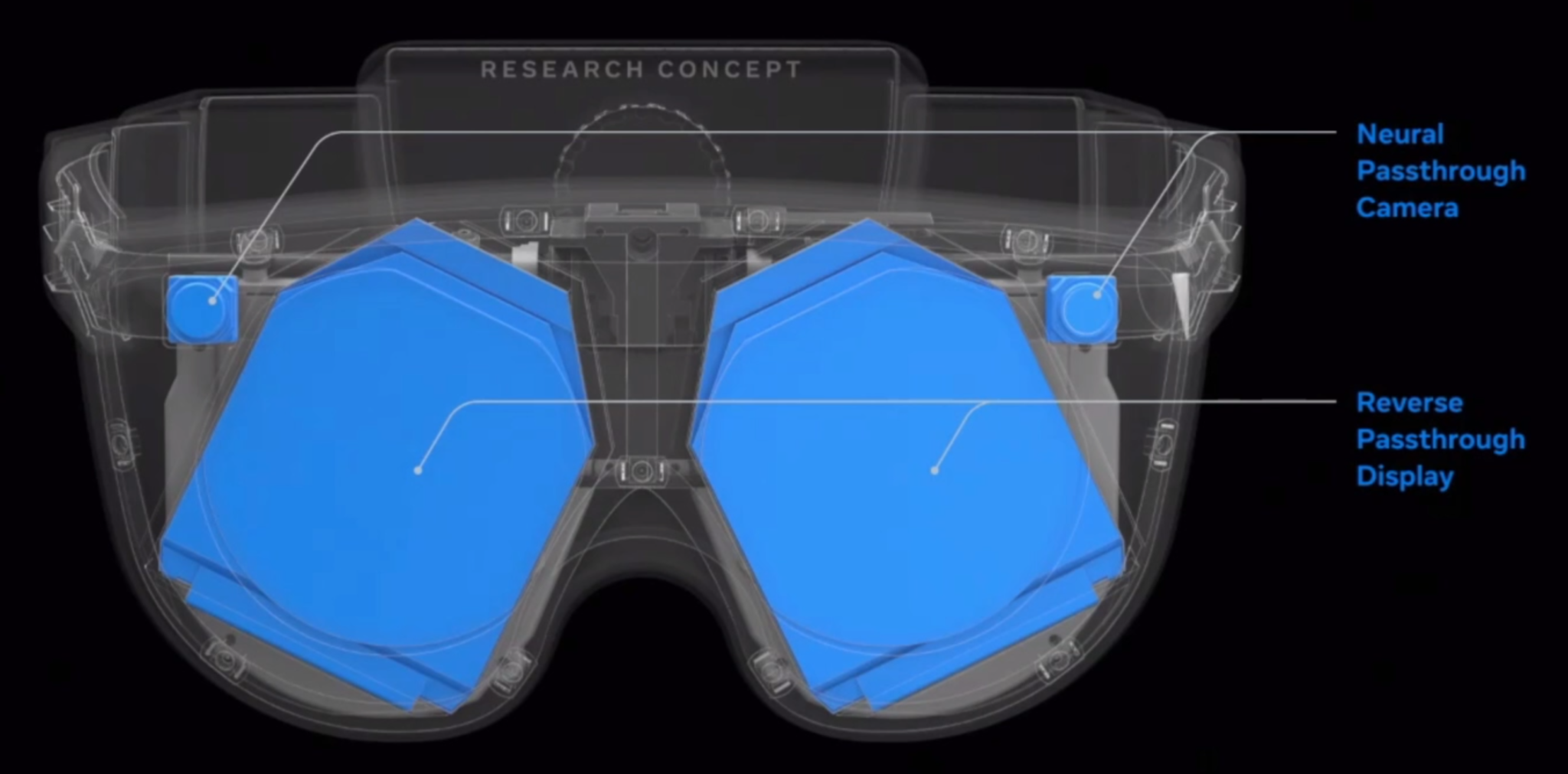
Of course, showing off a bulky impractical research prototype is a very different thing from actually shipping a technology in a sleek product. But Meta claims the Mirror Lake concept design incorporates this tech in a small form factor.
